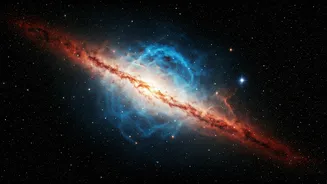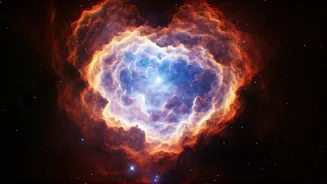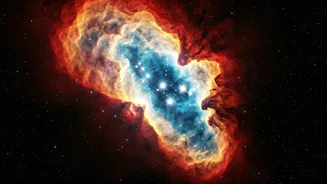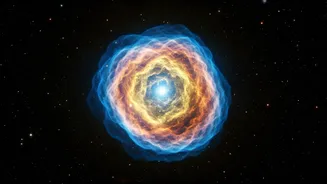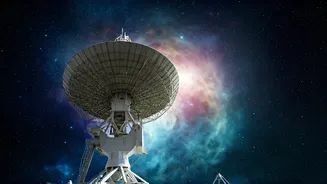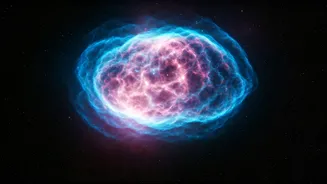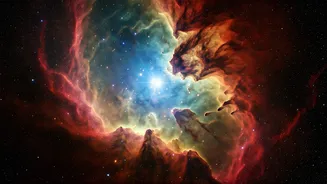Cosmic Canvas Unveiled
NASA's latest image releases are a visual feast, demonstrating the agency's commitment to exploring and documenting the universe. Each picture is a testament
to the power of human ingenuity and the pursuit of knowledge. These images are not merely snapshots; they are meticulously crafted works of art, capturing light and color from across the cosmos. Scientists and engineers work together to capture these images using sophisticated telescopes and instruments, which then helps the public understand and appreciate the vastness of space, allowing us to connect with the universe in a profound way. The images also enhance our appreciation of Earth's place within the larger cosmic context. These visuals are more than just pretty pictures; they are important tools for scientific discovery, furthering our understanding of the universe.
Distant Galaxy Wonders
Some images highlight distant galaxies, showcasing their stunning shapes and sizes. These galaxies, located millions or even billions of light-years away, present a diverse array of structures, from swirling spirals to massive ellipticals. The images reveal the dynamics within these galaxies, including star formation regions and the effects of gravitational forces. Observing these distant galaxies helps astronomers study the evolution of the universe. The light captured from these far-off galaxies provides clues about the early cosmos and the processes that shaped its current form. Detailed studies of these galaxies help refine our models of cosmic evolution, helping to understand how the universe has expanded and changed over billions of years. These images are essential for unraveling the mysteries of the universe, and allow a glimpse into the past, as light from these galaxies has traveled for incredible distances to reach our telescopes.
Earth from Above
NASA's collection includes breathtaking views of our planet from space. These images offer a unique perspective on Earth's beauty and complexity. Capturing swirling cloud patterns, vibrant oceans, and expansive landmasses, these images help scientists monitor the environment. They play an important role in tracking climate change, understanding weather systems, and assessing the impact of human activities on the planet. Images also help in disaster relief efforts, providing crucial data for assessing the damage caused by natural disasters like hurricanes, floods, and wildfires. By combining satellite imagery with ground-based observations, scientists can create a more holistic understanding of Earth's systems. These images serve as a powerful reminder of Earth's fragility, emphasizing the importance of preserving our planet for future generations. They highlight the intricate connection of Earth’s systems and the significance of environmental stewardship.
Nebulae's Colorful Hues
The images feature vibrant nebulae, which are clouds of gas and dust where stars are born. These nebulae are often depicted in stunning colors, resulting from the emission of light by energized gases. The images reveal these stellar nurseries, showcasing the active processes of star formation and the intricate structures formed by stellar winds and radiation. These nebulae act as the raw materials for future stars and planets. NASA's images show the different stages of stellar evolution, from the birth of stars to their eventual demise, providing valuable insights into the lives of stars. By studying these nebulae, astronomers gain a better understanding of how stars are born, evolve, and ultimately meet their end. This gives us important information about the lifecycle of stars, and also provides insight into the interstellar medium, which is the space between stars.
Inspiring Future Explorations
The release of these NASA images inspires a sense of wonder and encourages the public to explore the cosmos. These images ignite curiosity and create a sense of shared excitement about the mysteries of the universe. The visual data stimulates education and outreach initiatives. These images are used in classrooms, museums, and science centers to connect audiences with the wonders of space. The images also demonstrate the crucial role of international collaboration. NASA frequently works with other space agencies around the world, making sure that scientific knowledge is shared. These images represent a combined effort, allowing a wider view of our universe. These breathtaking images will inspire future generations of scientists, engineers, and explorers to reach for the stars, and to push the boundaries of human knowledge and exploration.
